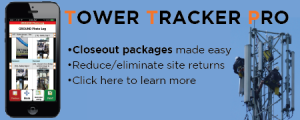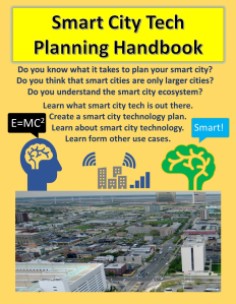Podcast: Play in new window | Download | Embed
Subscribe: Apple Podcasts | RSS
How would you Initiate a Smart City Plan? What are some typical smart city approaches? I think I have a quick summary of what is out there. I added this to my upcoming book, Smart City Use Cases, which I think will cover many of the smart city rollouts that have already happened. How they approached it, and why they did it.
The thing that I see, in most cases, is that cities have a typical approach which stems from a few motivational factors.
First, what problem are you going to solve? Start with the end in mind.
Next, you need money, grant money is a big one that cities look for. You may base your problem around the grant money, and that’s OK because it will get your teams moving into problem-solving mode.
Then, future proof. This is critical to sustain your initiatives and have them seen in a positive light. You want your legacy to be a great thing, something that can be built on, not replace right away. You also want something that residents and local businesses appreciate.
Solve Problems
This means that cities need a service, so they incorporate it into smart city services. This helps with the publicity and buy in. One thing you learn about government and large companies, you need to buy in. How do you get buy-in? You make it popular, sexy, and build it up as something you can’t live without.
This is where the smart city play becomes a necessity. If the city has a garbage problem, they could just hire people to pick up the garbage, or maybe they could create a high-tech solution which may cost more now, but in the long run, it is automated and has lower maintenance costs than hiring 100 new people to do the same thing. It won’t be much more CapEx, but it will be lower OpEx over the long run, AND it will be labeled as a smart city service! We all know that smart city services are sexy, so why not own it!
Grant Money
If there is grant money, cities look at winning it, and they go after it. Not all, but if they think they have shot, it is a great way to get
started. The federal government, in the US, handed out money for contests they started in 2015. It was a great way to spark interest. Cities had several options to get the money, but it wasn’t all about the money! They got exposure, publicity, and partners. That’s right, the smart people who wanted a smart city got some smart partners. The feds did a lot to make this happen, and they knew it would spark the economy to create a new industry, the smart city industry.
Columbus, Ohio, won the department of transportation’s challenge which gave them $140M USD in grant money! Awesome for Columbus, a great place to visit and a smart city run by smart people. They get money for the autonomous vehicle research, battery research, putting in charging stations, and a healthy check to upgrade their public transportation systems. So radical that they get a $140M head start in all the other cities. Learn more at https://techcrunch.com/2016/06/23/columbus-ohio-officially-winner-of-dot-smart-city-challenge-and-140-million-in-innovation-grants/ if you’re interested.
We all know this is about the services that are coming, but if the feds would not have gotten involved, then it would not have come to the forefront. I have a list of cities below but let’s look at what companies jumped on the bandwagon.
- AT&T – they started an entire smart city division with services and IOT planning, end to end.
- Nokia – they have so many smart city strategies that your head will spin.
- Ericsson – they moved into this because it has so many synergies with what they are already doing.
- Black and Veatch – it fits right into their game plan to deploy across any city.
- Crown Castle Inc. – they see the small cell and fiber opportunities here, they know it’s an opportunity.
- Microsoft – actually, if you look back in history, Bill Gates saw the smart home 20 years ago, and it’s just now becoming mainstream. Microsoft sees the potential for more software and services for smart city applications. They see the huge payback.
- Amazon – you read it right, Amazon. You see the cloud will be a huge part of the smart city backbone, so Amazon is on the cutting edge for cloud services. Also, they see value in the drone delivery, although who knows if they will pursue actual mass drone deployment. They also want people connected 24/7 so said people could purchase from Amazon 24/7. (I hope people buy my books 24/7!)
- Apps companies because they see opportunity when people are connected. Look at how the smartphone changed the world and added many new businesses where people can use an app to make their lives better, or worse depending on your perspective.
- Public safety, meaning police, fire, rescue, ambulance, and all the companies that supply them. Public safety needs You know, live video needs cameras and broadband, emergency workers need real-time connectivity wherever they are. Do you see the dots connecting? Do you get it? Broadband provided by the internet access provider, fiber by suppliers, rolled out by deployment teams, parts provided by suppliers, designed by engineers, made useful by apps and programs and wireless connectivity so that emergency workers have access where they are, not back at the dispatch center only. Do you see the dots connecting?
- Any local tech business in that city will be a winner, they can participate, or they can offer new services based off of what the city is offering.

Future Proofing
The need to future proof will help smart city growth. Most cities want to retain their identity, and that is great. However, San Antonio didn’t just keep the Alamo and forget about expanding the city or growth or try to attract sports and business to their area. They know that you need to hold on and preserve history, but you also need to add high-tech services to grow the business.
Hence, future proofing will be a key element to any city. They want to do two major things, attract business and residential growth, the two should be looked at as one), AND they want to become a safe city with public safety a prime focus. All of this adds up to new services and will be the foundation for growth. Future proofing will be a key element for any city if they want to become a player in the world economy.
I would use the California cities like San Diego, Chula Vista, San Jose, Long Beach, and so much more I missed. They know that they need to be innovative and attract business. They can’t rely on the state, who has a very high-income tax, to attract people to the state, they know they must be innovative. When I look at them, I am ![]() impressed by what they have done and the approach they all have taken. They inspire me to remain motivated in this area.
impressed by what they have done and the approach they all have taken. They inspire me to remain motivated in this area.
I also look at Kansas City, often overlooked, but not to be outdone by anyone. They have come a long way and continue to expand. Kansas City has added interactive kiosks, broadband, and Wi-Fi so that for years to come residents and tourist alike can enjoy it and appreciate all that KC has to offer. They know that it will build off the foundation they put in.
When I visit any of the cities mentioned above, I truly appreciate all the services, connectivity, and beauty of each one. Each city makes me feel safe and connected.
Resources:
- http://smartcitiescouncil.com/article/1-overlooked-smart-city-resource-and-its-usually-free
- http://kcmo.gov/smartcity/
- http://www.techrepublic.com/article/how-chula-vista-is-turning-its-bayfront-into-a-smart-city-test-bed/
- https://www.sandiego.gov/sustainability/smart-city
- https://www.columbus.gov/smartcolumbus/home/
- https://www.transportation.gov/smartcity
Be smart, be safe, and pay attention!
See Ya!
How do you plan goals? Now you can plan 5 Weeks at a time! The 5-week Planning Journal, (click here), available now in paperback from Amazon!
The foundations below do beautiful work, helping families in their time of need. Climbers often get seriously injured or die on the job. The foundations below support those families in their time of greatest need!






 Putting together your smart city tech solutions, planning, development, and more….TechFecta! Guiding you to a better plan through consulting!
Putting together your smart city tech solutions, planning, development, and more….TechFecta! Guiding you to a better plan through consulting!

















